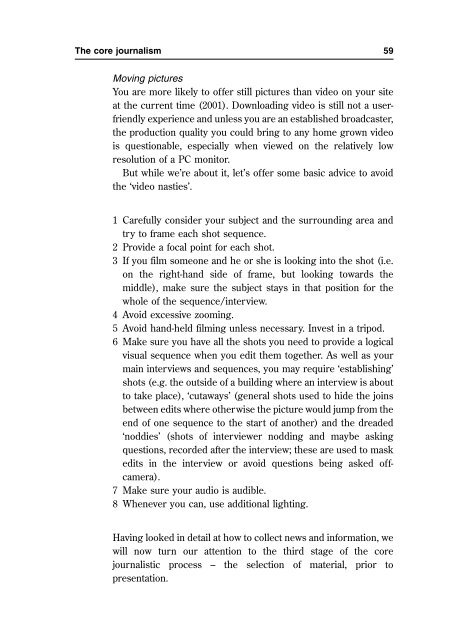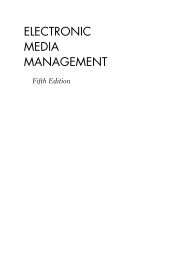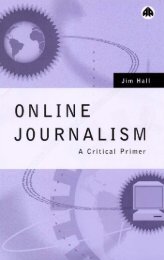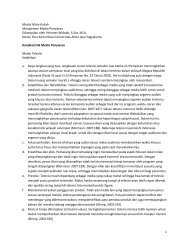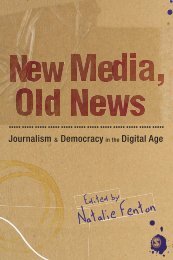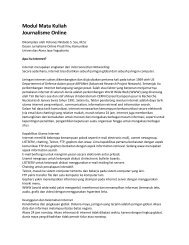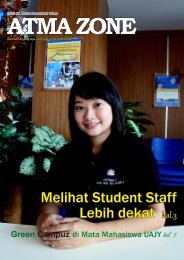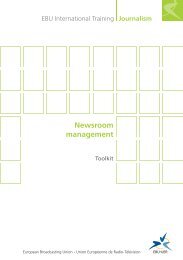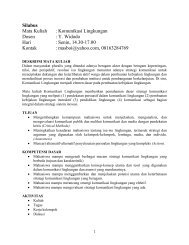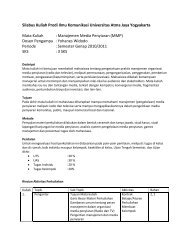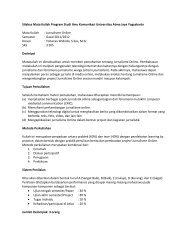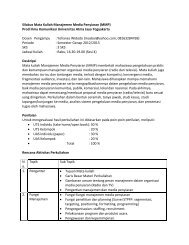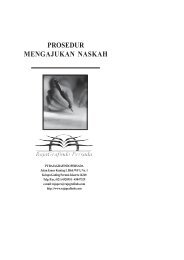1What is online journalism? - Ayo Menulis FISIP UAJY
1What is online journalism? - Ayo Menulis FISIP UAJY
1What is online journalism? - Ayo Menulis FISIP UAJY
Create successful ePaper yourself
Turn your PDF publications into a flip-book with our unique Google optimized e-Paper software.
The core journal<strong>is</strong>m 59<br />
Moving pictures<br />
You are more likely to offer still pictures than video on your site<br />
at the current time (2001). Downloading video <strong>is</strong> still not a userfriendly<br />
experience and unless you are an establ<strong>is</strong>hed broadcaster,<br />
the production quality you could bring to any home grown video<br />
<strong>is</strong> questionable, especially when viewed on the relatively low<br />
resolution of a PC monitor.<br />
But while we’re about it, let’s offer some basic advice to avoid<br />
the ‘video nasties’.<br />
1 Carefully consider your subject and the surrounding area and<br />
try to frame each shot sequence.<br />
2 Provide a focal point for each shot.<br />
3 If you film someone and he or she <strong>is</strong> looking into the shot (i.e.<br />
on the right-hand side of frame, but looking towards the<br />
middle), make sure the subject stays in that position for the<br />
whole of the sequence/interview.<br />
4 Avoid excessive zooming.<br />
5 Avoid hand-held filming unless necessary. Invest in a tripod.<br />
6 Make sure you have all the shots you need to provide a logical<br />
v<strong>is</strong>ual sequence when you edit them together. As well as your<br />
main interviews and sequences, you may require ‘establ<strong>is</strong>hing’<br />
shots (e.g. the outside of a building where an interview <strong>is</strong> about<br />
to take place), ‘cutaways’ (general shots used to hide the joins<br />
between edits where otherw<strong>is</strong>e the picture would jump from the<br />
end of one sequence to the start of another) and the dreaded<br />
‘noddies’ (shots of interviewer nodding and maybe asking<br />
questions, recorded after the interview; these are used to mask<br />
edits in the interview or avoid questions being asked offcamera).<br />
7 Make sure your audio <strong>is</strong> audible.<br />
8 Whenever you can, use additional lighting.<br />
Having looked in detail at how to collect news and information, we<br />
will now turn our attention to the third stage of the core<br />
journal<strong>is</strong>tic process – the selection of material, prior to<br />
presentation.


